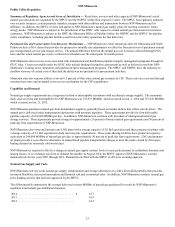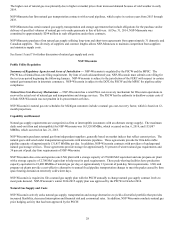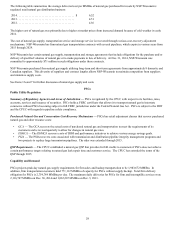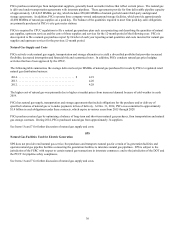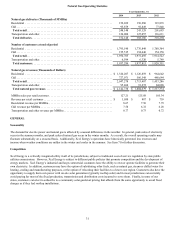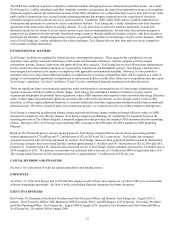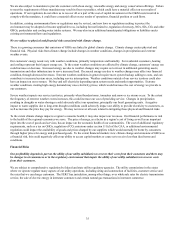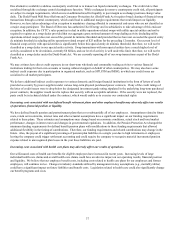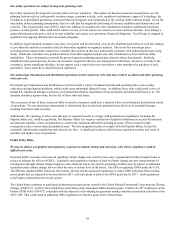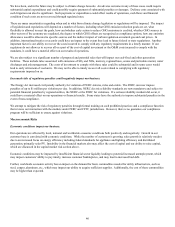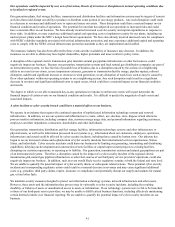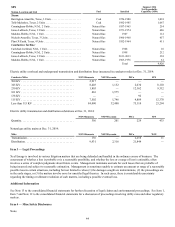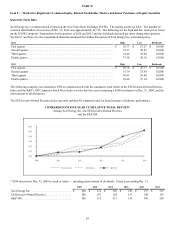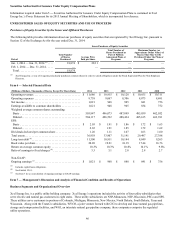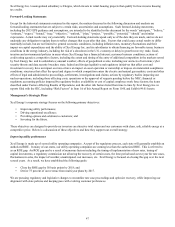Xcel Energy 2014 Annual Report Download - page 55
Download and view the complete annual report
Please find page 55 of the 2014 Xcel Energy annual report below. You can navigate through the pages in the report by either clicking on the pages listed below, or by using the keyword search tool below to find specific information within the annual report.37
One alternative available to address counterparty credit risk is to transact on liquid commodity exchanges. The credit risk is then
socialized through the exchange central clearinghouse function. While exchanges do remove counterparty credit risk, all participants
are subject to margin requirements, which create an additional need for liquidity to post margin as exchange positions change value
daily. The Dodd-Frank Wall Street Reform and Consumer Protection Act (Dodd-Frank Act) requires broad clearing of financial swap
transactions through a central counterparty, which could lead to additional margin requirements that would impact our liquidity.
However, we have taken advantage of an exception to mandatory clearing afforded to commercial end-users who are not classified as
a major swap participant. The Board of Directors has authorized Xcel Energy and its subsidiaries to take advantage of this end-user
exception. In addition, the CFTC’s rules permit us to deal in utility operations-related swaps with utility special entities and not be
required to register as a swap dealer provided that our aggregate gross notional amount of swap dealing activity (including utility
operations-related swaps) does not exceed the general de minimis threshold and provided that we have not exceeded the special entity
de minimis threshold (excluding utility operations-related swaps) of $25 million for the preceding 12 months. Our current level of
financial swap activity with special entities is significantly below this special entity de minimis threshold; therefore, we will not be
classified as a swap dealer in our special entity activity. Swap transactions with non-special entities have a much higher level of
activity considered to be de minimis, currently $8 billion, and our level of activity is well under this limit; therefore, we will not be
classified as a swap dealer under the Dodd-Frank Act. We are currently reporting all of our swap transactions as part of the Dodd-
Frank Act.
We may at times have direct credit exposure in our short-term wholesale and commodity trading activity to various financial
institutions trading for their own accounts or issuing collateral support on behalf of other counterparties. We may also have some
indirect credit exposure due to participation in organized markets, such as SPP, PJM and MISO, in which any credit losses are
socialized to all market participants.
We do have additional indirect credit exposures to various domestic and foreign financial institutions in the form of letters of credit
provided as security by power suppliers under various long-term physical purchased power contracts. If any of the credit ratings of
the letter of credit issuers were to drop below the designated investment grade rating stipulated in the underlying long-term purchased
power contracts, the supplier would need to replace that security with an acceptable substitute. If the security were not replaced, the
party could be in technical default under the contract, which would enable us to exercise our contractual rights.
Increasing costs associated with our defined benefit retirement plans and other employee benefits may adversely affect our results
of operations, financial position or liquidity.
We have defined benefit pension and postretirement plans that cover substantially all of our employees. Assumptions related to future
costs, return on investments, interest rates and other actuarial assumptions have a significant impact on our funding requirements
related to these plans. These estimates and assumptions may change based on economic conditions, actual stock and bond market
performance, changes in interest rates and changes in governmental regulations. In addition, the Pension Protection Act changed the
minimum funding requirements for defined benefit pension plans with modifications to these funding requirements that allowed
additional flexibility in the timing of contributions. Therefore, our funding requirements and related contributions may change in the
future. Also, the payout of a significant percentage of pension plan liabilities in a single year due to high retirements or employees
leaving the company could trigger settlement accounting and could require the company to recognize material incremental pension
expense related to unrecognized plan losses in the year these liabilities are paid.
Increasing costs associated with health care plans may adversely affect our results of operations.
Our self-insured costs of health care benefits for eligible employees have increased in recent years. Increasing levels of large
individual health care claims and overall health care claims could have an adverse impact on our operating results, financial position
and liquidity. We believe that our employee benefit costs, including costs related to health care plans for our employees and former
employees, will continue to rise. Changes in industry standards utilized by management in key assumptions (e.g., mortality tables)
could have a significant impact on future liabilities and benefit costs. Legislation related to health care could also significantly change
our benefit programs and costs.


